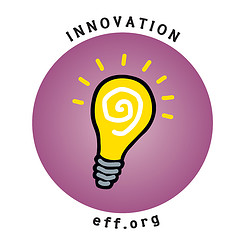|
|
|
Monday, October 21st, 2019

Poking through 13+ years of posts I find information that’s as useful now as when it was written.
Golden Oldies is a collection of the most relevant and timeless posts during that time.
It’s interesting that so many of the entrepreneurs whose ideas could actually change the world are either still in school (not college) or at the other end of the spectrum. It also seems that most of the 20s/30s/40s crowd are primarily interested in changing their financial status and burnishing their brand. Oops! Seems like I’m getting cynical in my golden years.
Read other Golden Oldies here.
I frequently see comments on blogs and social sites along the lines of “I know I could be an entrepreneur if I just had a good idea” or “I want to be an entrepreneur and change the world.”
Sadly, it seems that most are looking for ideas to make them the next Groupon or Foursquare and while that might make them rich, it will hardly change the world.
There’s nothing inherently wrong with that, but it won’t change much or get you into the history books.
You change the world by tackling real-world problems, often with hard science.
But you don’t need to be a scientist; self-taught Gary Cola invented the world’s lightest, strongest steel that takes less than ten seconds to make.
In fact, you don’t have to be an adult. Take a look at the winners of the first Google Science Fair and you will be blown away; none are 18 yet and none of their ideas involved the Internet.
Here’s an idea; if you want to change the world look for problems with global impact. Blake Mycoskie is changing the world with shoes and glasses, while Anthony Capone, CEO of Nimbus Water Systems, is changing it with inexpensive, solar-powered, portable water purification systems.
Then there are toilets.
Yes, toilets.
That handy gadget that we take for granted (unless it isn’t working) and that many parts of the world only dream about.
“No innovation in the past 200 years has done more to save lives and improve health than the sanitation revolution triggered by invention of the toilet.” –Sylvia Mathews Burwell, president of the Bill & Melinda Gates Foundation’s global development program
And the Gates Foundation is putting its money where its mouth is.
Look around; think about changing the world by reinventing or innovating something that addresses a basic need.
You may not end up as rich as Mark Cuban, but I guarantee that it’s the sexiest, most exciting, rewarding, feel-good thing you’ll ever do.
Image credit: Kate Ter Haar
Posted in Entrepreneurs, Golden Oldies, Innovation | No Comments »
Wednesday, August 2nd, 2017

Wally Bock’s post yesterday ended with this comment.
Our heroes have always been cowboys, but maybe it’s time for something different.
Assuming you agree with him, the question, of course, is how do you change?
One problem with the current version of hero is that they aren’t good at driving innovation — unless they thought of it themselves.
If not, they often respond in one of two ways.
- Negatively, by immediately stating all the possible reasons it won’t work; or
- duplicitously, by putting it down and then presenting it later as their own idea.
Dutch artist Daan Roosegaarde, known for creating social designs that explore the relation between people, technology and space, has a simple idea that provides an elegant solution.
The Yes But chair.

This chair has voice recognition and will give you a little shock when you say the words ‘yes but’. He developed this chair because he was frustrated that so many people start with these words when they hear a new idea.
One useful modification that comes to mind is some kind of control that is capable of adjusting the voltage, since a minor shock might not be enough to jolt a hero out of their rut.
Please join me over the next 10 days for more on changing what what makes a hero.
Image credit: CyrielKortleven.com and DeanO Exposed
Posted in Change, Ducks In A Row, Personal Growth | No Comments »
Monday, July 24th, 2017
It’s amazing to me, but looking back over more than a decade of writing I find posts that still impress, with information that is as useful now as when it was written.
Golden Oldies are a collection of what I consider some of the best posts during that time.
Companies constantly talk about what they are doing to incentivize productivity and innovation. Incentives are supposed to help drive performance. Recognition is very important as are financial rewards — as long as they are seen as fair. If not, they act more as disincentives, as seen in the first post.
The second focuses on sales incentives.Maximizing revenue generation, AKA, sales, is a top priority for every business, from micro startups through the Fortune 10. Commissions have always played a significant role incentivizing salespeople — until they don’t.
Read other Golden Oldies here.
The Reward Should Fit the Act
 Are you familiar with the saying “let the punishment fit the crime?” Are you familiar with the saying “let the punishment fit the crime?”
It’s a valid approach, but it’s just as true that the reward should fit the action.
A friend of mine works for a Fortune 1000 company in a tech support role. He’s well respected lead tech in his group.
Last year he developed an idea on his own time and gave it to his company.
As a result, he was flown to annual dinner and presented with an award and a $5000 bonus.
Sound impressive?
His idea will save his company $5 million or more each year.
Still impressed?
My friend isn’t.
He has a friend who is very impressed, but that’s because his company doe nothing; no recognition whatsoever.
My friend feels that a $5K reward for saving the company $5M or more every year, while being better than nothing, is still just short of an insult.
Other than being disappointed what’s the fallout?
He likes his job and his boss, so he’s not planning on leaving, but…
He has another idea that he’s not going to bother developing.
He’s still one of the most productive people they have, but that extra edge is gone.
What do you think his employer should have done?
Join me tomorrow for another look at how, to quote another old saying, companies keep cutting off their noses to spite their faces.
Image credit: dinny
Ducks in a Row: Incentive Stupidity Knows No Bounds
 Yesterday I told you how a company squashed my friend’s initiative by giving him a bonus that had no relationship to the value he provided them in annual savings. Yesterday I told you how a company squashed my friend’s initiative by giving him a bonus that had no relationship to the value he provided them in annual savings.
This reminded me of something that happened back in the early 1980s when sales was truly dependent on the skill, relationships and reputations of salespeople.
Another guy friend, another incredibly stupid company.
In a nutshell,
- Guy outsold every salesperson both internally and at the competition. He had years of experience; relationships with customers that didn’t quit and unmatched skill at understanding customers and convincing them that his company (whichever it was) had the best solution available.
- One day guy was called into the CFOs office and told that his commission was being capped.
- He was on track to earn more than the president and that was unacceptable; he asked if they were sure that was the only solution and told yes.
- Guy proceeded to write a resignation letter on a sheet of paper he borrowed from the CFO.
- He left the offices without speaking to anyone.
- By the time he reached home there were three name-your-own-terms offers from competitors on his voicemail.
- He started with his new company the next day.
Over the years I’ve found that actions like these usually come from the company’s bean counters. (In this instance, ‘bean counters’ is definitely a derogatory term.)
Apparently, some bean counters involved never learned to do the math.
In both cases the actual cost was zero, since they were funded from direct actions well beyond anything expected of the employees involved.
The lesson here is that you never cap a commission and the reward for saving $5 million annually should be at least 1% of one year ($50,000) as opposed to .001% ($5,000).
I realize it’s difficult for some financial types, executives and managers to understand, but that is why bonuses and commissions are called incentives—not disincentives.
Image credit: Finsec
Posted in Compensation, Golden Oldies, Motivation, Retention | No Comments »
Thursday, August 7th, 2014
 I always look forward to attending events produced by AlwaysOn. They do an exceptional job bringing together high-profile players appropriate for the conference subject, entrepreneurs, service providers and other interested parties. The Silicon Valley Innovation Summit 2014 I attended last week was no different, but the devil was in the details. I always look forward to attending events produced by AlwaysOn. They do an exceptional job bringing together high-profile players appropriate for the conference subject, entrepreneurs, service providers and other interested parties. The Silicon Valley Innovation Summit 2014 I attended last week was no different, but the devil was in the details.
Those both present and presenting were recognized tech movers and shakers—well worth listening to—the networking was excellent and I made some stealth contacts I’m not at liberty to discuss.
Subject matter centered on mobile any/everything, Big Data, SaaS, subscriber, consumer and investment globalization, which left me a bit disappointed even though big data is Quarrio’s ’thing’.
There was no mention of the tech I’m hearing/reading about daily, i.e., artificial intelligence, nanotechnology, synthetic biology, etc., and the combination of these technologies with mobile and big data.
We all know that this kind of focus and talk follows the money, so I am left with a question.
Are the ideas being funded yesterday’s instead of tomorrow’s?
KG Charles-Harris is CEO of Quarrio and a frequent contributor to MAPping Company Success.
Posted in Entrepreneurs, Innovation | No Comments »
Wednesday, April 16th, 2014

Personally, I think the only thing dumber than expecting a twenty-something to design a product that resonates with Boomers (the people with money) is to have predominantly men leading, guiding and driving innovation for a corporation whose customer base is 83% female.
Yet, that is what was going on at Kimberly-Clark.
In fact, the situation was dire enough in 2009 that it even caught the eye of the board.
If they wanted to create better products targeted to female shoppers, executives realized, they had to transform into the kind of company that propelled women into higher positions instead of letting their careers stall.
With consultants’ assistance, the company did a wide-ranging survey of what was holding women back.
These ranged from concerns that promotions would lead to putting their families second to eradicating the “mommy track” stigma to the time to commute in China.
Kimberly has moved aggressively to address the roadblocks and has accomplished a great deal over the intervening five years.
By 2013, women at Kimberly-Clark made up 26% of the director-level or higher slots, up from 19% in 2009. Female representation on the board of directors also increased.
That was enough to win Catalyst Inc.’s top award for advancing women in the workplace.
Of course, the prime question is did it pay off in terms that Wall Street could understand?
At the end of 2009, the company’s stock price stood at $63.71. By the end of 2013, it had risen to $104.46.
‘Nuff said; money talks.
Flickr image credit: Kimberly-Clark
Posted in Change, Culture, Innovation | No Comments »
Thursday, August 1st, 2013

I attended my first AlwaysOn Innovation Summit this past week and I was really impressed with the companies, ideas, and technologies highlighted during the summit. We often read about new companies launching products that are merely a twist on the social network, e-commerce, or the latest industry deemed “ripe for disruption.” The companies highlighted in the Summit certainly had more to offer.
As a capitalist and a social entrepreneur, I believe in the power of technology to improve lives across the socio-economic spectrum. There are significant economic opportunities in providing solutions to real problems faced by families in the US and the emerging world, that are often overlooked for some reason or another. The AO Innovation Summit highlighted many companies with technologies and ideas with the potential to change economies, alleviate poverty and, most importantly, save lives.
We heard from Mike Cheiky of V-Grid Energy Systems, whose company focuses on providing cheap energy to help connect the rest of the world to the internet. More impressive still, the by-product of their process is a fertilizer that can be used in those same regions to improve agriculture and alleviate food-security issues. Children go hungry every day, and governments have been overthrown as a result of food prices.
The panel on the changing landscape of education stood out for the immense potential impact that technology is having in this area. We heard from Daphne Koller of Coursera, a company with a mission to provide free and open access to elite education. In a world where the cost of education is raised beyond the reach of most families, this will undoubtedly improve lives both domestically and abroad. Imagine a kid in Haiti learning to code on Coursera and creating the next great technology firm. Speaking of which, Tim Draper, founder of Draper University, is doing what most people say can’t be done – teaching entrepreneurship. Draper University’s 8-week program fosters skills and provides the kind of experience that can help set-off the light bulb for the next generation’s Steve Jobs or Elon Musk.
The future of fashion will not simply be about the designer on the label, it will benefit from beautifully designed technology solutions that improve our daily lives. At the AO Innovation Summit, we were treated to a new wave of wearable technologies that will help us be more efficient, assess our health, and provide critical insights. Dave Icke of MC10 demonstrated their ground-breaking technology that allows parents to monitor their sick baby’s temperature with a simple patch. Now imagine the infinite possibilities of such a technology and its ability to lower the infant mortality rates in the emerging world.
From discussions with a variety of companies at the Summit, it’s clear there is a cultural shift within our industry. Businesses should have a lasting positive impact on our community, as well as prove to be sound investment for our partners. For too long those propositions have been polarized. At the AO Innovations Summit I was pleased to see more businesses sharing our vision of the future. I am not saying these solutions will solve all of the world’s problems, but it gives me hope that our best and brightest are tackling real world problems and not merely catering to the latest fad.
Jerry Nemorin is Founder and CEO of LendStreet Financial Inc., a social lending platform whose mission is to help people get out of debt, rebuild their credit, and get a fresh start.
Posted in Entrepreneurs | No Comments »
Wednesday, September 5th, 2012
 If you listen to the media, especially new media, you would think the US is a hotbed of innovation. If you listen to the media, especially new media, you would think the US is a hotbed of innovation.
You would be wrong.
“The Information Technology Innovation Foundation ranked the U.S. last of 40 countries in terms of improved innovation capacity over the past decade.”
What if you asked business leaders? More than two-thirds would give their organizations high marks for innovation.
But what happens when you ask the working stiffs in those same organizations? You’d find innovation marks well below half.
Some 78% of leaders said yes; just 43% of employees agreed. Does the leader “urge employees to continually expand their understanding of business trends and emerging issues”? Leaders 77%; employees 51%. Does he or she “guide employees who fail or make mistakes to reframe the experiences as learning opportunities”? Leaders 77%; employees 47%. And does he or she “champion the merits of employee-initiated ideas to senior management”? Leaders 75%; employees 42%.
Those questions were asked of “513 leaders and 514 non-leader employees.”
I found grim amusement in the recommended fixes.
- Senior Management Sets the Pace
- Choose the Right Leaders
- Develop Innovation Leaders
- Build a Business Process for Innovation.
I thought senior management were the leaders, but obviously not since they are supposed to choose the “right leaders” and develop “innovation leaders.”
The idea that innovation thinking and support can be delegated by senior management to specialists at lower levels is just plain ludicrous.
If you want an innovative company filled with innovative employees then you need a culture of innovation that includes no fear, room for initiative and where the messenger is never killed.
(For more on culture and innovation, including links to research and articles, click here.)
Oops; I forgot to send an entry to The September 2012 Leadership Development Carnival NFL Kick-off Edition, but at least I remembered to give you the link!
Flickr image credit: EFF
Posted in Culture, Innovation | No Comments »
Friday, August 17th, 2012
A Friday series exploring Startups and the people who make them go. Read all If the Shoe Fits posts here
 The following story spans the time from ancient Rome to modern day space travel and provides a case study in just how far “that’s the way X did it” can travel. The following story spans the time from ancient Rome to modern day space travel and provides a case study in just how far “that’s the way X did it” can travel.
The US standard railroad gauge (distance between the rails) is 4 feet, 8.5 inches. That’s an exceedingly odd number.
Why was that gauge used?
Because that’s the way they built them in England, and English expatriates built the US Railroads.
Why did the English build them like that?
Because the first rail lines were built by the same people who built the pre-railroad tramways, and that’s the gauge they used.
Why did “they” use that gauge then?
Because the people who built the tramways used the same jigs and tools that they used for building wagons, which used that wheel spacing.
Okay! Why did the wagons have that particular odd wheel spacing?
Well, if they tried to use any other spacing, the wagon wheels would break on some of the old, long distance roads in England, because that’s the spacing of the wheel ruts.
So who built those old rutted roads?
Imperial Rome built the first long distance roads in Europe (and England) for their legions. The roads have been used ever since.
And the ruts in the roads?
Roman war chariots formed the initial ruts, which everyone else had to match for fear of destroying their wagon wheels. Since the chariots were made for Imperial Rome, they were all alike in the matter of wheel spacing.
The United States standard railroad gauge of 4 feet, 8.5 inches is derived from the original specifications for an Imperial Roman war chariot. Bureaucracies live forever…
So the next time you are handed a spec and told we have always done it that way and wonder what horse’s ass came up with that, you may be exactly right, because the Imperial Roman war chariots were made just wide enough to accommodate the back ends of two war horses.
Now the twist to the story…
When you see a Space Shuttle sitting on its launch pad, there are two big booster rockets attached to the sides of the main fuel tank. These are solid rocket boosters, or SRBs. The SRBs are made by Thiokol at their factory in Utah. The engineers who designed the SRBs would have preferred to make them a bit fatter, but the SRBs had to be shipped by train from the factory to the launch site.
The railroad line from the factory happens to run through a tunnel in the mountains. The SRBs had to fit through that tunnel. The tunnel is slightly wider than the railroad track, and the railroad track, as you now know, is bout as wide as two horses’ behinds.
So, a major Space Shuttle design feature of what is arguably the world’s most advanced transportation system was determined over two thousand years ago by the width of a horse’s ass.
The take-away here is that the next time you or one of your team push to do something a certain way give some thought to why that’s the way to do it—no one wants to be accused of channeling a horse’ ass.
Hat tip to my model RR friend John who sent this to me.
Option Sanity™ is a completely new approach to allocating incentive stock.
Come visit Option Sanity for an easy-to-understand, simple-to-implement stock allocation system. It’s so easy a CEO can do it.
Warning.
Do not attempt to use Option Sanity™ without a strong commitment to business planning, financial controls, honesty, ethics, and “doing the right thing.”
Use only as directed.
Users of Option Sanity may experience sudden increases in team cohesion and worker satisfaction. In cases where team productivity, retention and company success is greater than typical, expect media interest and invitations as keynote speaker.
Flickr image credit: HikingArtist
Posted in Entrepreneurs, If the Shoe Fits, Innovation | 2 Comments »
Monday, August 13th, 2012
 Are you familiar with the saying “let the punishment fit the crime?” Are you familiar with the saying “let the punishment fit the crime?”
It’s a valid approach, but it’s just as true that the reward should fit the action.
A friend of mine works for a Fortune 1000 company in a tech support role. He’s well respected lead tech in his group.
Last year he developed an idea on his own time and gave it to his company.
As a result, he was flown to annual dinner and presented with an award and a $5000 bonus.
Sound impressive?
His idea will save his company $5 million or more each year.
Still impressed?
My friend isn’t.
He has a friend who is very impressed, but that’s because his company doe nothing; no recognition whatsoever.
My friend feels that a $5K reward for saving the company $5M or more every year, while being better than nothing, is still just short of an insult.
Other than being disappointed what’s the fallout?
He likes his job and his boss, so he’s not planning on leaving, but…
He has another idea that he’s not going to bother developing.
He’s still one of the most productive people they have, but that extra edge is gone.
What do you think his employer should have done?
Join me tomorrow for another look at how, to quote another old saying, companies keep cutting off their noses to spite their faces.
Stock.xchng image credit: dinny
Posted in Culture, Innovation, Motivation | 2 Comments »
Tuesday, July 24th, 2012
 Increasing innovation is on every CEO’s mind these days no matter how hot their current product/service, because innovation is what’s necessary to ensure their company’s future success. Increasing innovation is on every CEO’s mind these days no matter how hot their current product/service, because innovation is what’s necessary to ensure their company’s future success.
But is there such a thing as too much innovation?
Ever hear the phrase ‘too much of a good thing’?
Innovation is good, but too much can kill as quickly as too little.
For proof, consider the story of Lego, which, after 56 years of growth almost bankrupted itself by developing a total ‘culture of innovation’ based on expert thought and best practices.
Kirk Christiansen [CEO] and his leadership team adhered to nearly every one of the major principles that are widely prescribed by experts in launching its spate of innovation in 2000 (…) “LEGO followed all the advice of the experts and yet it almost went bankrupt.” –David Robertson, Wharton practice professor of operations and information management, who studied the company and has a new book documenting what happened.
In turning itself around Lego did not pull back from innovation, rather it organized and channeled it.
Management gave everyone from the sales force to the headquarters staff the capability to create and suggest new avenues for growth. But their ideas were put to the test: Any innovation had to prove to be consistent with the company goal of LEGO being recognized as the best company for family products.
Did the new approach work?
Consider the numbers over the last three years and you decide,
- sales have gone up an average of 24% annually;
- profits have grown 41%;
- third largest manufacturer of play materials; and
- is in more than 130 countries.
Lego is positive proof that best practices work only when managed and tailored for each individual situation—even though they are usually billed as “one size fits all.”
Flickr image credit: Benjamin Chun
Posted in Culture, Ducks In A Row, Innovation | No Comments »
|
 Subscribe to
Subscribe to
MAPping Company Success
About Miki 
Clarify your exec summary, website, etc.
Have a quick question or just want to chat? Feel free to write or call me at 360.335.8054
The 12 Ingredients of a Fillable Req
CheatSheet for InterviewERS
CheatSheet for InterviewEEs™
Give your mind a rest. Here are 4 quick ways to get rid of kinks, break a logjam or juice your creativity!
Creative mousing
Bubblewrap!
Animal innovation
Brain teaser
The latest disaster is here at home; donate to the East Coast recovery efforts now!
Text REDCROSS to 90999 to make a $10 donation or call 00.733.2767. $10 really really does make a difference and you'll never miss it.
And always donate what you can whenever you can
The following accept cash and in-kind donations: Doctors Without Borders, UNICEF, Red Cross, World Food Program, Save the Children
*/
?>About Miki
About KG
Clarify your exec summary, website, marketing collateral, etc.
Have a question or just want to chat @ no cost? Feel free to write
Download useful assistance now.
Entrepreneurs face difficulties that are hard for most people to imagine, let alone understand. You can find anonymous help and connections that do understand at 7 cups of tea.
Crises never end.
$10 really does make a difference and you’ll never miss it,
while $10 a month has exponential power.
Always donate what you can whenever you can.
The following accept cash and in-kind donations:
|







 Are you familiar with the saying “let the punishment fit the crime?”
Are you familiar with the saying “let the punishment fit the crime?” Yesterday I told you how a company squashed my friend’s initiative by giving him a bonus that had no relationship to the value he provided them in annual savings.
Yesterday I told you how a company squashed my friend’s initiative by giving him a bonus that had no relationship to the value he provided them in annual savings. I always look forward to attending events produced by AlwaysOn. They do an exceptional job bringing together high-profile players appropriate for the conference subject, entrepreneurs, service providers and other interested parties. The
I always look forward to attending events produced by AlwaysOn. They do an exceptional job bringing together high-profile players appropriate for the conference subject, entrepreneurs, service providers and other interested parties. The 
 If you listen to the media, especially new media, you would think the US is a hotbed of innovation.
If you listen to the media, especially new media, you would think the US is a hotbed of innovation. The following story spans the time from ancient Rome to modern day space travel and provides a case study in just how far “that’s the way X did it” can travel.
The following story spans the time from ancient Rome to modern day space travel and provides a case study in just how far “that’s the way X did it” can travel. Increasing innovation is on every CEO’s mind these days no matter how hot their current product/service, because innovation is what’s necessary to ensure their company’s future success.
Increasing innovation is on every CEO’s mind these days no matter how hot their current product/service, because innovation is what’s necessary to ensure their company’s future success.
